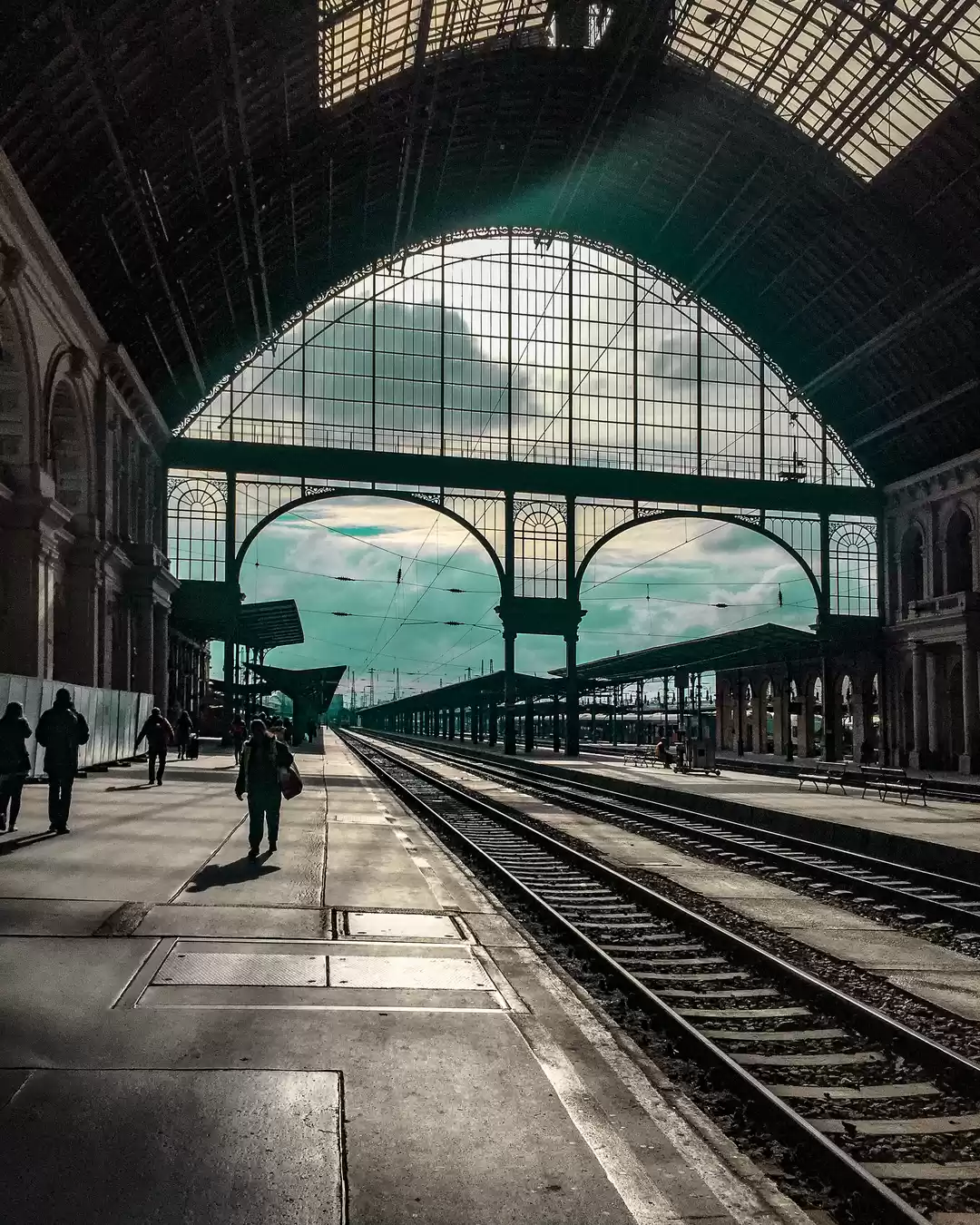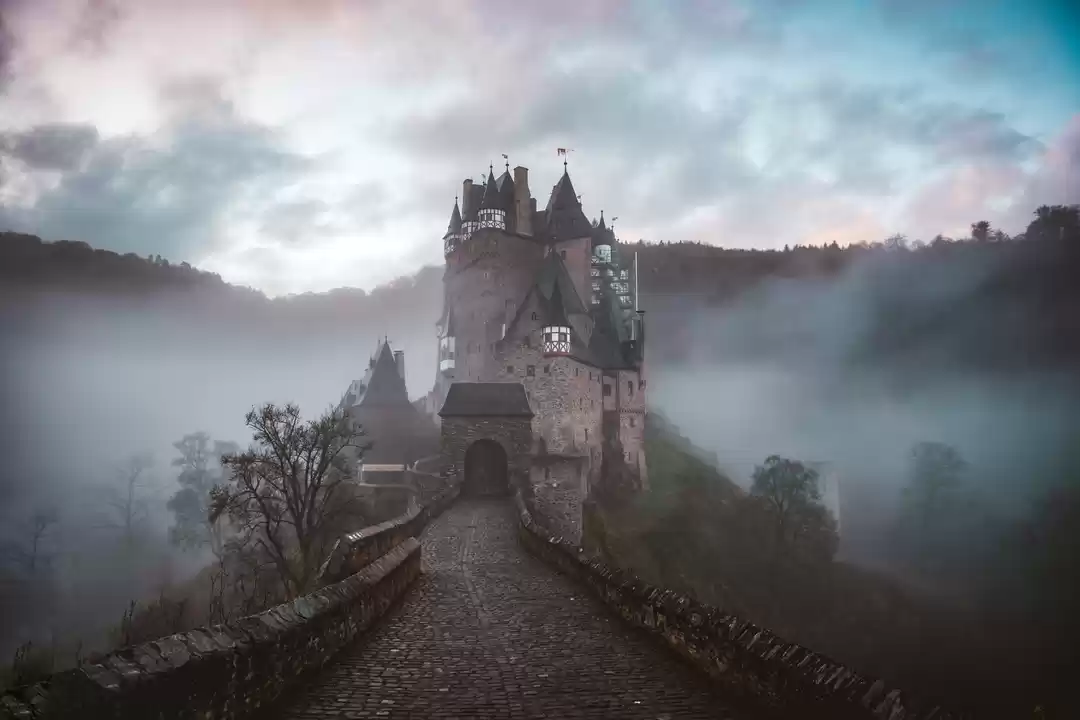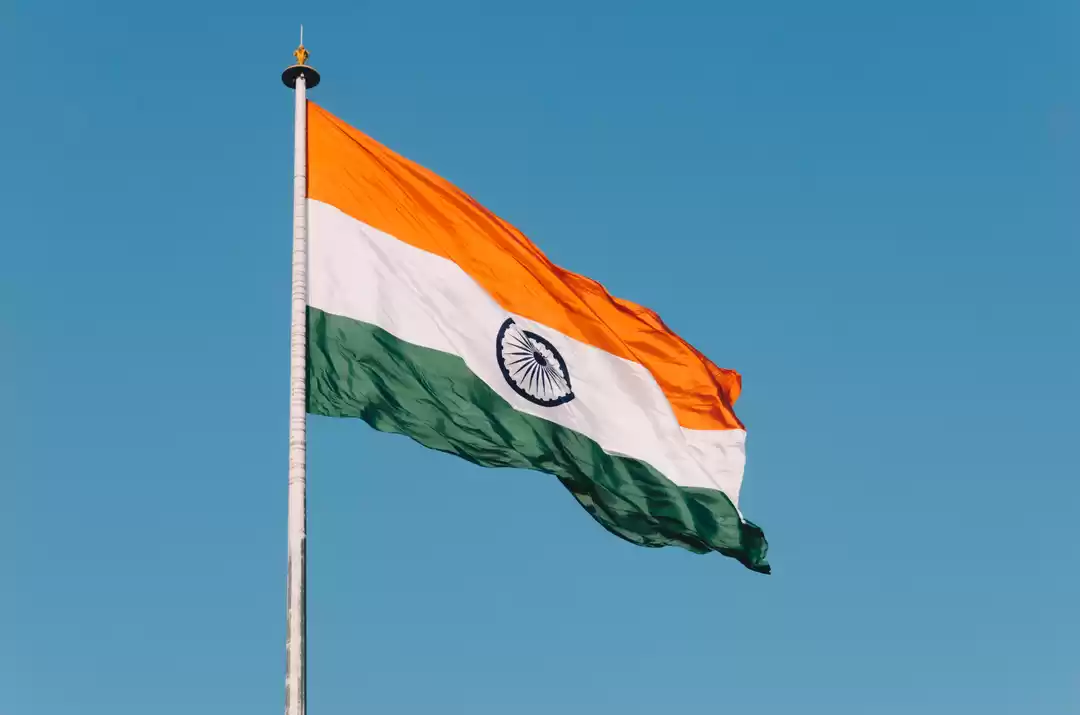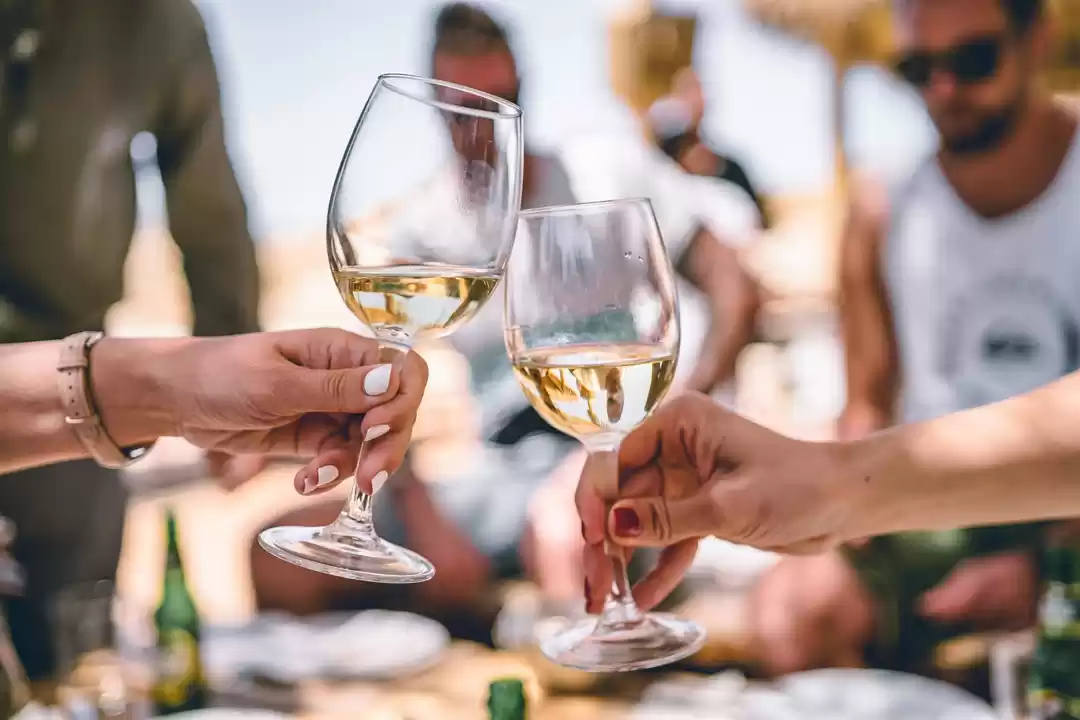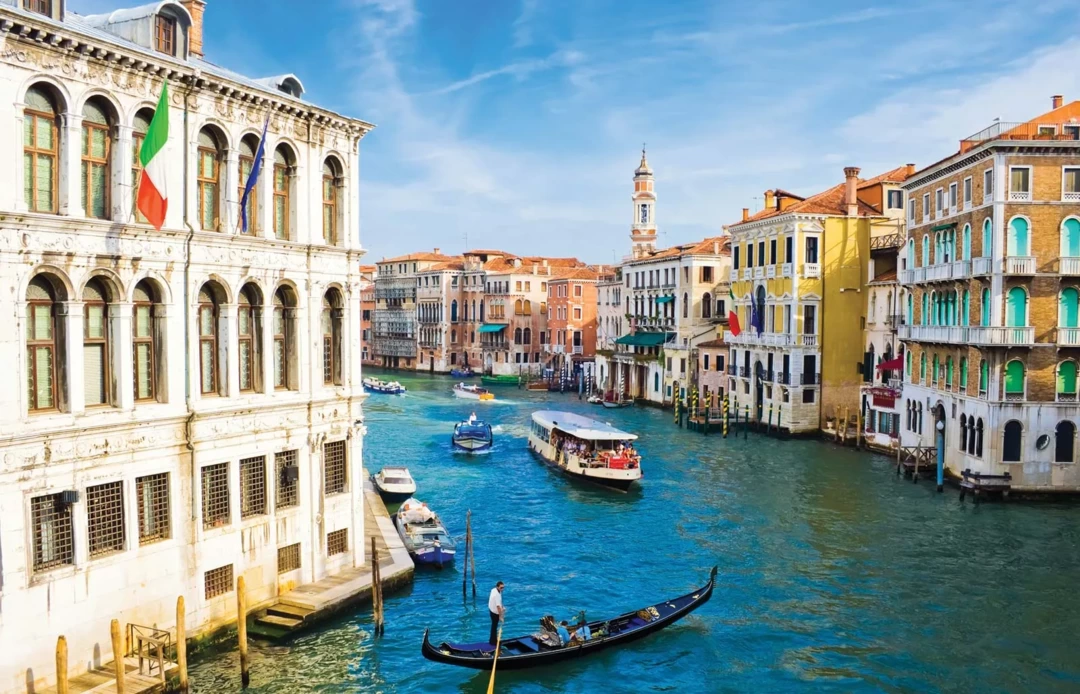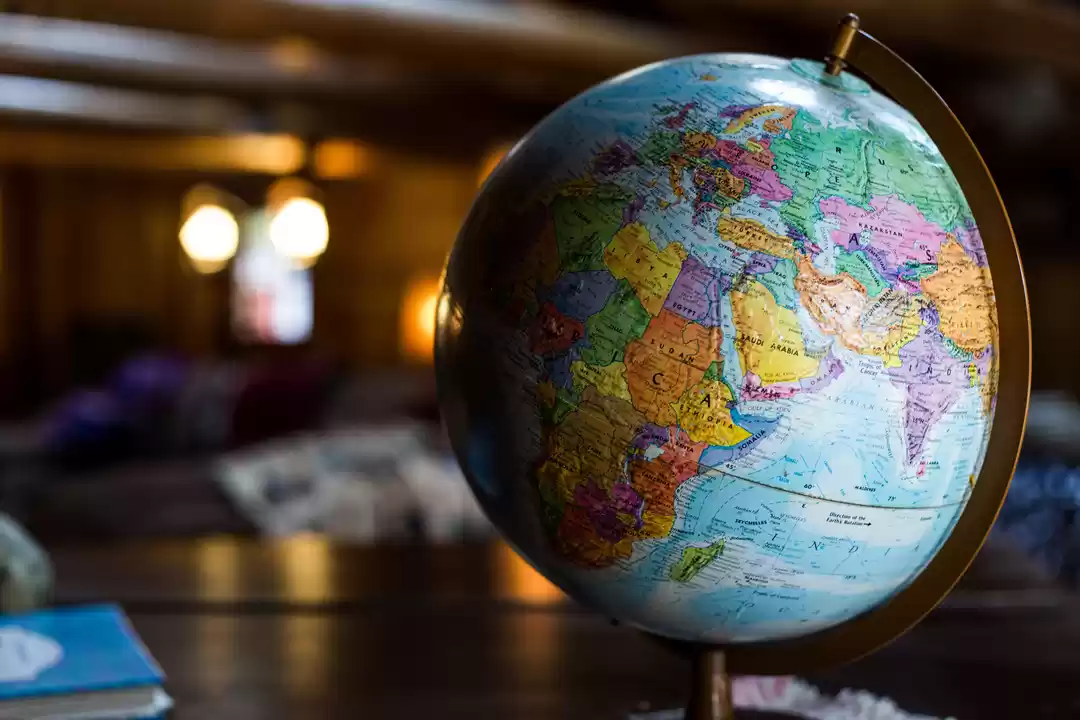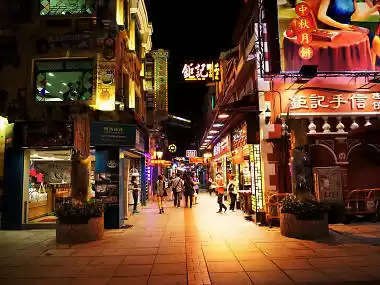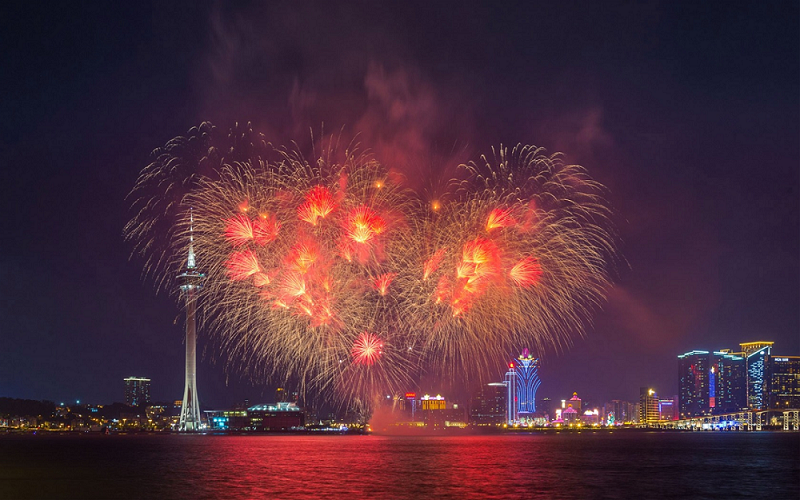#20ThingsILoveAboutMacao
About Macao
The strategic location of Macao on the Chinese territory, and the special relationship established between the Chinese and Portuguese authorities favoured an important interchange of human values in the various fields of culture, sciences, technology, art and architecture over several centuries. Macao represents an outstanding example of an architectural ensemble that illustrates the development of the encounter between the Western and Chinese civilisations over some four and half centuries, represented in the historical route, with a series of urban spaces and architectural ensembles, that links the ancient Chinese port with the Portuguese city.
Macao is located at 113° 32’47” E and 22° 11’52” N; closest to the World Natural Heritage site of Wulingyuan in Hunan Province, China, at 110°23’ 30” - 110°41’15” E and 29°16’25” - 29°24’25” N. Wulingyuan lies 852 kilometres northwest of Macao.
20 Things I love about macao
1 A-Ma Temple
A-Ma Temple built in the 15th century, also called Barra Temple, is situated halfway up the western slope of Barra Hill. It consists of the Gate Pavilion, the Memorial Arch, the Prayer Hall, the Hall of Benevolence, the Hall of Guanyin, and Zhengjiao Chanlin (a Buddhist pavilion), each forming a small part of the well-ordered complex which sits in perfect harmony with the natural environment

2 Moorish Barracks
Built in 1874 on the slope of Barra Hill, the Moorish Barracks is a brick and stone neo-classical structure with some Moorish influences giving it a somewhat exotic appearance. Measuring around 67 by 37 metres, the Moorish Barracks stand on a raised granite platform that is elevated from the street level. To the rear the construction has two floors, while the rest of the building has only one floor. Spacious 4-metre-wide verandas with Moorish pointed arches run along all sides of the building except that facing Barra Hil.

3 Mandarin’s House
The Mandarin’s House was built in around 1881. It covers an area of about 4,000 square metres at the corner of Barra Street and António da Silva Lane and is a traditional Chinese-style compound containing a number of buildings. The complex of buildings, from the gatehouse to the inner courtyard with its series of courtyard houses and servants’ quarters, extends more than 120m along Barra Street. The buildings are mainly constructed of traditional Chinese grey bricks, and the main buildings, which are two to three storeys high, have pitch roofs, while the singlestorey servants’ buildings have either simple gable or flat roofs.

4 Joseph’s Seminary Building and Church
St. Joseph’s Seminary Church built in 1758 is directly connected to the corresponding seminary building and has both inner and outer cloisters. With the seminary’s main entrance is on Seminário Street, access can also be gained via a flight of 54 granite steps, through a wooden door to the right of the church’s forecourt. Initially, the seminary building 23 was a two-storey structure, not the three-storey building visible today. Constructed predominantly of grey bricks, the solid walls stand on granite foundations. Inside, wide corridors give access to the various classrooms of the old seminary building.

5 Dom Pedro V Theatre
Dom Pedro V Theatre, built in 1860, is located on St. Augustine’s Square. The style is neo-classical in essence. The floor plan of the theatre has a lobby area, a small ballroom, and a circular auditorium with a stage and long corridors on both sides. There is a flight of stairs leading from the side corridors to the first floor where ten pillars in the auditorium area support a crescent-shaped balcony.

6 Leal Senado Building
The Leal Senado Building (Loyal Senate Building), erected in 1784, is located on a square bearing the same name, Leal Senado Square (Largo do Leal Senado). 25 The architecture style in the Leal Senado building is neo-classical. The main façade is 14.5 metres high and 44 metres wide and is divided into three sections by vertical granite projections. The central section of the main façade juts out slightly from the rest of the building and is topped by a triangular pediment 17 metres high. Granite Doric columns, supporting lintels made of the same material, flank the main entrance. On the main façade there are rows of windows in simple Renaissance style with granite casings. In the middle section, there are three French windows on the first floor, opening on to balconies with iron railings. The composition of the façade is completely symmetrical and the windows are the main architectural element, following a repetitive rhythmic pattern. The building is painted white which enhances the dark green colour applied on the window frames and on the main entrance door.

7 Mount Fortress
Mount Fortress built in 1626 stands on top of Mount Hill, which rises 52 metres above sea level. The fortress covers an area of 10,000 square metres, in the shape of a trapezoid. The four corners of the fortress protrude to form bulwarks. The north-eastern, south-eastern and south-western walls are built on 3.7 metre wide granite bases. The walls, 9 metres high narrowing upwards to 2.7 metres wide at the top, are made of solid rammed earth, further strengthened by a thick stucco of ground oyster shells. The parapet sections were crenulated for the installation of 32 cannons and the two corners of the south-east wall have watchtowers. The north-western and south-western granite walls facing the Chinese mainland do not have any battlements, indicating that the fortress was built only for defence against attacks from the sea. This military architectural concept represents a clear sign of friendship towards the Chinese authorities of the period.

8 Sir Robert Ho Tung Library
This building was constructed before 1894 and was originally the residence of Dona Carolina Cunha. Hong Kong businessman Sir Robert Ho Tung purchased it in 1918, using it as his retreat. In accordance with his will, the building was presented to the Macao Government for conversion into a public library.

9 Holy House of Mercy
Established by the first Bishop of Macao in 1569, this institution was modelled after one of the most prominent and oldest charitable organizations in Portugal, and was responsible for founding in Macao the first western-style medical clinic and several other social welfare structures that still function to this day. The building is neo-classical in the overall architectural treatment, but also depicts traces of mannerist influence

10 Lou Kau Mansion
The mansion is believed to be built in 1889.This was the home of Lou Kau, a prominent Chinese merchant who owned several imposing properties in the city. The location of this grand old house depicts the diverse social profile present in the centre of the old “Christian City”, where this traditional Chinese residence stands near Senado Square and Cathedral Square. Lou Kau Mansion is a two-storey, traditional grey-brick courtyard house, with the architectural characteristics of a typical xiguan Chinese residential building

11 Casa Garden
This house was built in 1770 and was originally the residence of a wealthy Portuguese merchant, Manuel Pereira. At a later period it was rented out to the East India Company. Nowadays the property is the headquarters of the Oriental Foundation.

12 Guia Fortress
The fortress was built between 1622 and 1638. Inside the fortress stands Guia Chapel, originally established by Clarist nuns, who resided at the site before establishing the Convent of St. Clare. The chapel’s elaborate frescoes depict representations of both western and Chinese themes, displaying motifs of religious and mythological inspiration that are a perfect example of Macao’s multicultural dimension. Guia Lighthouse, built in 1864, which also stands within the perimeter, is the first modern lighthouse on the Chinese coast. Guia Fortress, along with the chapel and lighthouse are symbols of Macao’s maritime, military and missionary past

13 Company of Jesus Square
The buildings surrounding the square were constructed between 1920 and 1930 apart from two that are 19th century neo-classical.

14 Macau Tower Convention and Entertainment Centre
Opened on 19th December, 2001, Macau Tower is 338 metres in height. It is an elegant construction offering magnificent panoramic views all over Macao and much of the Pearl River Delta from its observation deck and revolving restaurant, at the 223-metre level. There is the opportunity to walk around the outside of the tower for instance “Skywalk” or to play Skyjump. Besides the tower, there are a 4-floor Convention and Entertainment Centre, restaurants, cinema, a 2-level basement and an outdoor plaza.

15 Red Market
Built in the 1930s of red brick, this is one of the busiest markets in Macao. Located on the corner of Avenida Horta e Costa and Avenida Almirante Lacerda, it has three spacious floors with each floor devoted to fresh meats, live fish, vegetables and fruit from AREAS OF INTERESTfarms across the border and a vast array of condiments, sauces, dried and canned goods, household ware and handmade utensils. On the streets around the market are dozens of stalls selling food, bargain-priced clothing, handbags and all manner of useful items

16 Former Chong Sai Pharmacy
The building located at No. 80 in Rua das Estalagens, where the Former Chong Sai Pharmacy established by Dr. Sun Yat-sen, was built before 1892. The building is a typical shophouse. From July 1893 to early 1894, was one of the first pharmacies and clinics recorded in Macao’s history with western medical services, operated by Chinese doctor. Afterwards, the house was rented out, handed over and sold several times throughout the years, even being used as a Taoist hall and later used for textile businesses.

17 Camões Garden and Grotto
this romantic garden, with narrow paths winding between ancient “pagoda trees”, you will find every early morning men walking with their pet birds in ornate cages as well as plenty of men and women doing exercises. The Camões Grotto is located in the garden honouring the most famous Portuguese poet who may have lived in Macao in 1557. The bust of the poet is installed in a rocky grotto, close to stone slabs inscribed with some of his poems

18 Guia and Outer Harbour Ferry Terminal Area
If you want to go up the Guia Hill but would rather not climb, take the cable-car from the entrance of Flora Garden on Avenida Sidónio Pais. It takes only 80 seconds but gives a fine view of the garden, which contains an aviary, small zoo and interesting collection of nursery plants

19 Macao Science Center and Macau Fisherman’s Wharf
The Macao Science Center - designed by world-renowned Chinese-American architect I.M. Pei - is instantly recognisable by its silvery, cone-shaped exterior. Of the fourteen galleries arranged in a spiral and accentuated by an arch shape.AREAS OF INTERESTAfter Beijing and Hong Kong, Macao is the third city in the world to possess the 8,000 x 8,000 pixel screen equipment. The Center also generates 3D effects via a high definition 3D projection system in the Space Theatre of the Planetarium, the first digital system to be simultaneously equipped with ultra-high definition (8,000 x 8,000) and 3D visual effects in the world - all designed to give visitors an entertaining yet educational insight into the fascinating world of science. In addition, a same-scale model of the Shenzhou-VII spaceship and a number of automatic intelligent robots will be featured in the brand-new Macao Science Center.Macau Fisherman’s Wharf is a theme park, which contains many retail shops, restaurants, discotheque and other entertainment venues, with recreational objective.

20 Four Faces Buddha
The very popular Four Faces Buddha (a Thai divinity) stands outside the entrance of the Jockey Club. Visitors pay their respects here and ask for good luck at the races.

Other places for visit are:
• The House of Dancing Water
• Tree of Prosperity & Dragon of Fortune
• SkyCab
• Macao Cruise Tour
• Golden Reel
• Qube
• Eiffel Tower and Light Show
• Macao Giant Panda Pavilion and Pavilion ofRare Animals
• IPM Multisport Pavilion
• Nam Van Lake Nautical Centre
• Olympic Sports Centre
• Macao East Asian Games Dome
Tourism HotlineJust dial the Tourism Hotline 28 333 000 for immediate assistance, by operator or recorded message round-the-clock.Macao Government Tourism Office (MGTO) offers a dedicated Tourism Hotline 28 333 000, with a wide range of tourism related information available in Cantonese, Mandarin, Portuguese, English and Japanese, from dining-out, hotel accommodation, major tourist attractions, museums, entertainment, shopping, transportation to traveling information and much more... 24 hours round the clock service with operator or recorded message are available to provide assistance, handle enquiries and receive suggestions or complaints from tourists and local residents. Calls can be made from any local telephone.* Calling from overseas, please dial (853) 28 333 000

















